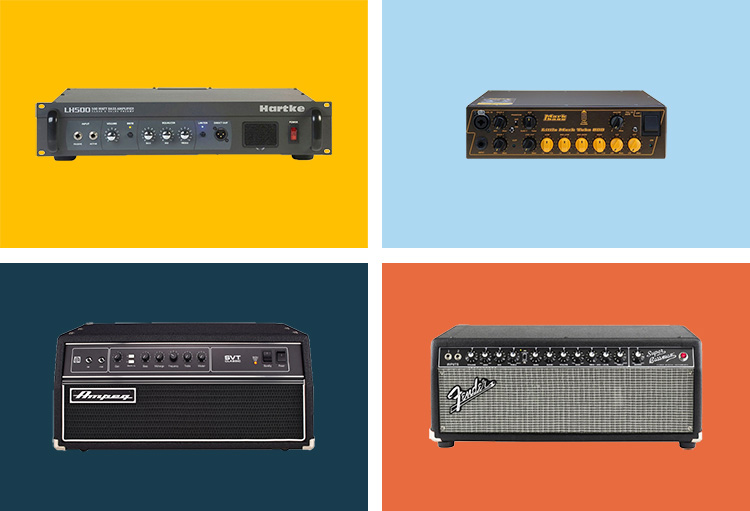You want to buy a new bass amp? I know how you feel, because I'm a bass player myself and I've already bought a few bass amps.
The choice can be very difficult because the market is so densely populated with offers that you quickly become overwhelmed. There are so many different types and different speaker sizes - you could almost think you have to get a degree to find the right one.
But don't worry: in this post, I'll explain everything about bass amps and the different technologies to help you choose.
Types of bass amplifiers
All bass amplifiers have two amplifier stages: the preamp at the beginning of the circuit and the power amp at the end. Between the two, effects such as EQ, compression or reverb are often added to shape the sound.
There are 4 different types of amplifiers for e-bass, classified by the components of the two stages.
Tube amplifiers
Tube amplifiers use vacuum tubes (electron tubes) to amplify the signal in the preamp and power amp. Such amps sound warmer than transistor amps because the tubes saturate the signal. Depending on how much gain is added, the signal becomes more or less distorted.
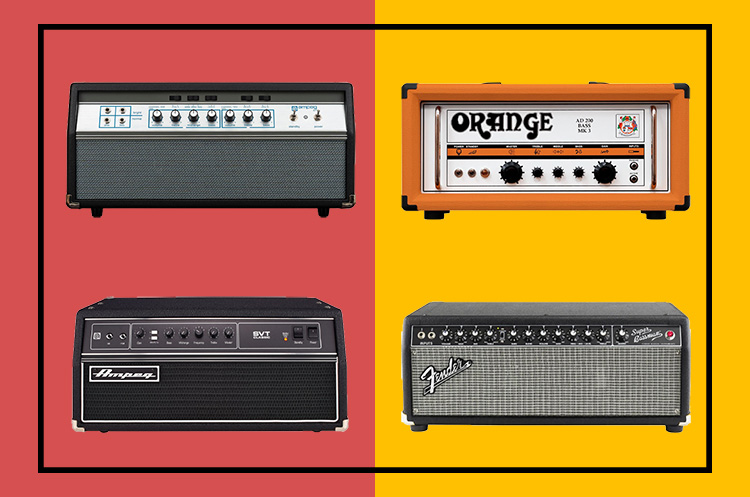
Accordingly, tube bass amps are more versatile than transistor amps because transistors can't distort. But tube amps have less headroom - that means if you want to play loud, the signal will be distorted.
Tube bass amps are bulky, heavier and more sensitive than transistor amps - but these are compromises you have to make if you like the "saturated" sound.
Also, with bass amplifiers, the cabs (speakers) are usually the heaviest part (The Ampeg SVT-810E weighs 63.5 kg!) - so a few kg more or less on the amplifier hardly makes a difference.
Solid-State Amplifier
This type of bass amplifier uses transistor circuits in both stages to convert the electrical signal into an audio wave. The amplifying property from the transistor produces a louder signal than the one coming in.
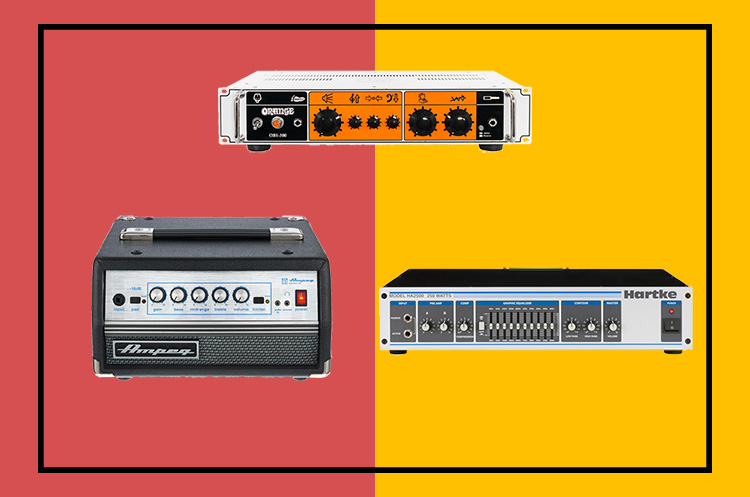
Transistor amps have a lot of headroom - that means you can turn the amp up very loud without distorting the signal. Since you often want the bass to be clean and undistorted, these types of amps are very popular with bassists - unlike guitarists.
Transistor amps are light, portable and robust - at the latest when you go on tour, you will be grateful for this.
Hybrid Amplifiers
Hybrid bass amps use tubes in the preamp and transistors in the power amp. Such bass amps have the advantage of giving players a tube-like overdrive when they turn up the volume or gain of their preamp.

But you still have the large headroom from the transistors in the power amp, so you can still turn it up very loud without distorting the bass sound even more.
So hybrid bass amps have some of the advantages of tube amps, like the nice, saturated sound, but are significantly cheaper and still lighter and more portable.
Digital Amplifiers
Digital bass amplifiers have a digital output stage and either a transistor or tube preamplifier. The big advantage of this technology is that digital power amps produce hardly any heat, so you can save on the enormous heat sinks.
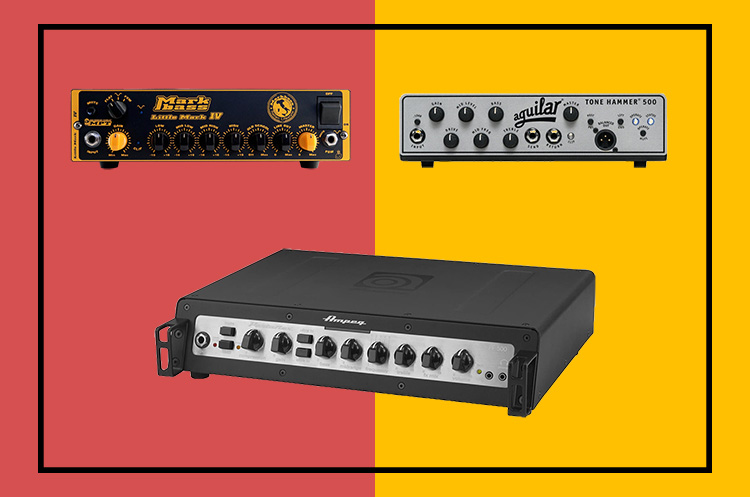
This means that these types of bass amplifiers are much lighter and smaller than their predecessors. By now, every brand has launched a digital model on the market - they stand out because they are much smaller than their older brothers.
Which speakers (bass cab) do I need for my bass amplifier?
Larger speakers (15″) usually give you more "boom", while smaller speakers (10"-12") give you more clarity and definition. Many bass players like to use a combination of different speaker sizes, thus revealing the entire spectrum.c
For example, I use 1×15" + 4×10" cabinets together. When I record the bass, I put mics on both cabinets so I can combine both channels later in the mix. This way I can try out different bass sounds.
I would recommend anyone who can afford it to buy a combination of 2 cabinets to keep all doors open. But if you only want to buy a bass cab, then I would recommend a 4×10" cabinet if you play rock, punk, heavy or similar. For jazz or reggae, I would recommend the 1×15", because here the sound is a bit deeper.
Combo, or should you rather buy the parts of the bass amp separately?
Now you should ask yourself whether you would rather buy a combo of amplifier + cab or both parts separately.
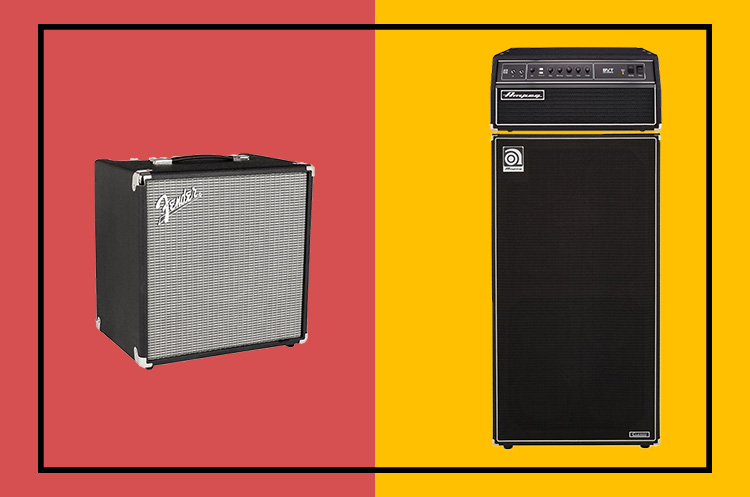
Combos are usually recommended for beginners. They are usually cheaper and you don't have to worry about impedances.
Advanced bassists eventually switch to amp + bass cab, as this has some advantages:
- You can use different cabs with the same amp, which is very handy in the studio and live to have different sounds available.
- There are usually better individual amplifiers than those built into the combos.
- If one part of it breaks, it can be easily repaired or replaced without affecting the other parts.
The best tube bass amplifiers
We start chronologically: The tube bass amplifiers were already around from the 50s onwards. There are models that have remained almost unchanged even today - at least in terms of sound. Nowadays, they are still considered the best sounding bass amps.
The analog saturation of tubes is something that cannot be imitated, even with VST plugins or effects units. Of course, there are nowadays very good plugins and simulations that mimic the sound of these amps so well that most people would not notice any difference.
But nothing comes close to the distortion of a real Ampeg with a real 8×10" cabinet. That's why the best studios in the world still use these units!
But if you don't need distortion, all-tube amps aren't necessarily right for you either - after all, there are cheaper amps that perform just as well in the clean range.
In terms of price, all-tube amps are the highest of all. They are big, massive and heavy - but good sound doesn't come for free.
Orange AD200B Mk3
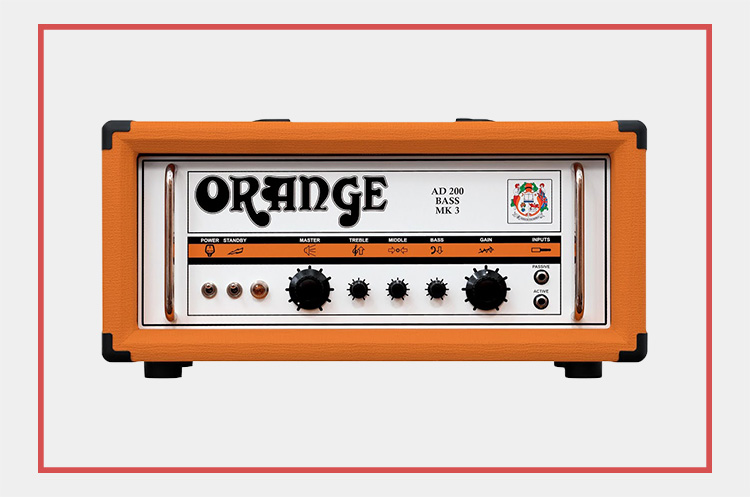
The Orange AD200B is one of the best-known and most popular bass amplifiers, and for good reason: it delivers a crystal-clear, present sound that is truly unmistakable. The sound is very dynamic and impulse-frequent and is perfect for rock and heavy.
When you turn up the preamp, the sound gets distorted quickly, and that's where the amp can really shine. You get that typical Orange dirty distortion that everyone loves. After all, it's not the best bass amp for rock for nothing!
At 24kg and 200W tube power, this bass amp can get very loud, which can be handy for live (you don't need mics or a PA!).
But if you're looking for a more clean bass sound, there are probably better options than this bass amp.
Price: 2.379€, Link
Ampeg SVT 50th Heritage Sp.Ed.
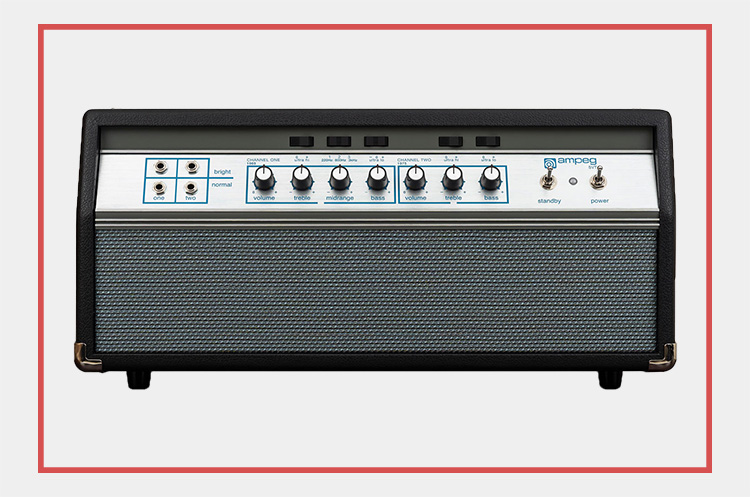
The Ampeg SVT is another classic bass amp - after all, it has been in production since 1969. Of course, there have been several versions over the years, but Ampeg has always stayed true to the original sound that everyone loves.
A total of 14 vacuum tubes are built into the Ampeg SVT 50th Heritage Sp.Ed.: five 12AX7s in the preamp, one 12AX7 and two 12AU7s in the driver, and six 6550s in the power amp. This gives you enough power for the biggest stages - even there, you won't be able to turn this bass amp up to 100%.
There are 2 channels in the new Heritage Edition: One corresponds to the sound from the 1969 variant, and channel 2 is oriented towards the sound of the models from the mid-70s onwards. So you have enormous tonal flexibility with this bass amp.
However, there is no master volume control - this means that the bass amp gets loud when I want distortion, as I have to turn up the one volume control.
This bass amp can sound clean and it can also distort - and both damn well. Many people - including myself - consider this bass amp to be the best ever.
Unfortunately, it is very expensive (3,399€), so I could only try it out in a music shop, but I fell in love with the sound straight away.
Price: 3.399€, Link
Ampeg SVT CL
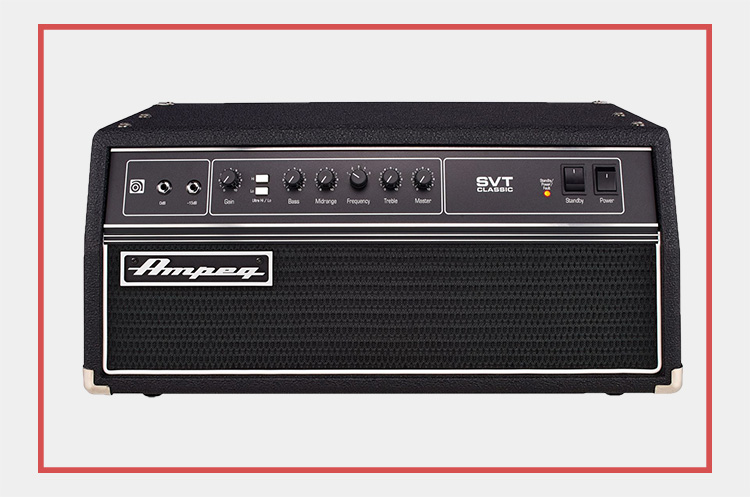
This Ampeg model is also a classic par excellence and is considered the industry standard - it is often found in very many recording studios.
The SVT CL is a powerful tube amp with two 12AX7 preamp tubes, two 12AU7 and one 12AX7 driver tubes, and six 6550 tubes in the power amp. The tubes are spring-loaded in the case to make them shockproof, and a fan keeps them cool.
The sound of this amplifier is similar to the previous one, it can sound very good both clean and distorted. With a total power of 300 W, it is loud enough to fill a whole football stadium.
With the gain control, you can make the sound really dirty if you wish. The 3-band EQ, including five selectable frequencies for the midrange, allows very flexible sound adjustment.
And with the Ultra Low and Ultra High switches you can raise the respective ranges - I especially love the Ultra Low, you can trigger earthquakes with it.
On the back of the bass amplifier there is an impedance selector (2 Ohm/4 Ohm), a DI Out, a polarity switch, two bias pots, a slave out, a pre amp out, a power amp in, two ¼-inch speaker outputs and a Speakon output. So more than enough connection options!
Price: 2.129€, Link
Fender Super Bassman
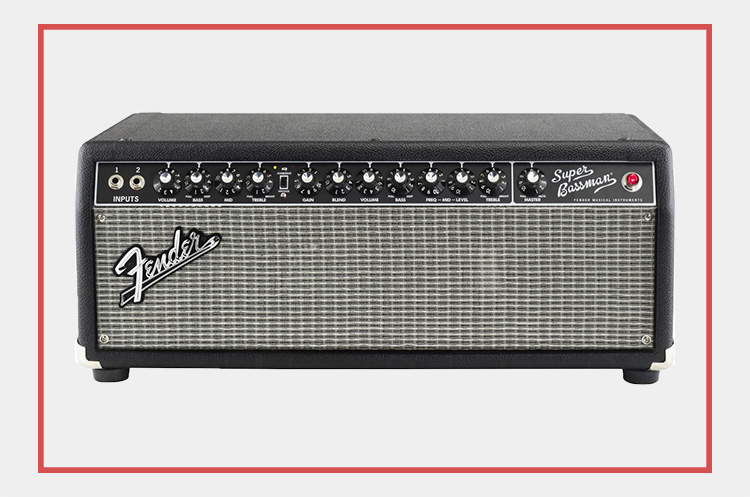
The history of this bass amplifier begins in 1951 - at that time the amplifier was still called Fender Bassman - when the Fender Precision Bass also came onto the market.
The signal path starts with a pair of 12AX7 preamp tubes, which are routed to a 12AX7 driver tube and a 12AT7 phase inverter, then sent to six 6550 power amp tubes. In total, this amp delivers 300W of all-tube power.
2 channels are available, a vintage and an overdrive. The Vintage Channel uses Fender's classic tone stack for warmer vintage tones and uses a simple three-band EQ and volume control to shape the sound.
The Bass and Treble controls can be pulled out to activate Ultra Low and Ultra High modes.
The overdrive channel is responsible for distorted and dirty sounds. In addition to the 3-band EQ, which is also equipped with a control to select the mid frequencies, this channel has a gain control with which you can distort the sound.
In addition, the overdrive channel has a blend control, which you can use to mix in the clean signal to get more punch in the low end.
As you can see, this bass amp offers a particularly large number of sound-shaping options - and that's exactly what I find so great about it. It can sound extremely clean, all the way to rocking and extremely distorted - and of course everything in the middle!
Price: 2.899€, Link
The best transistor bass amplifiers
In the 80s, the first transistor bass amplifiers appeared on the market. They are lighter than tube amps and do not colour the sound as much - but transistors cannot distort.
These bass amps use transistors in both the preamp and the power amp. They are also much cheaper than all-tube amps.
Hartke 2500 Bass Top
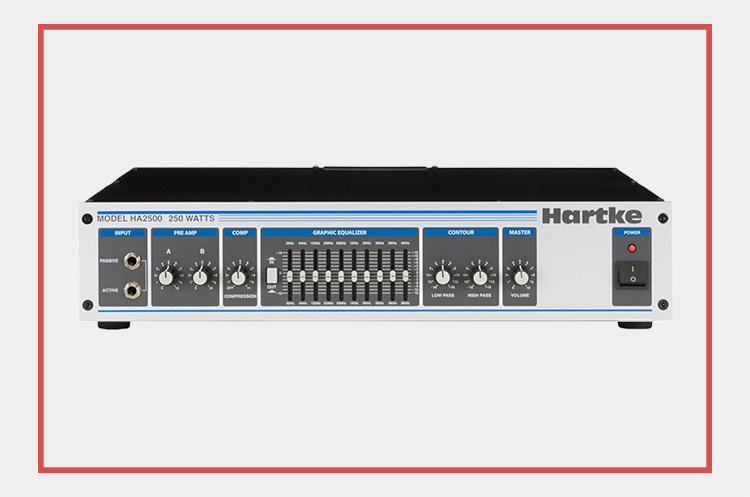
This bass amplifier from Hartke has 250 watts - however, one must know that the same power produces different volumes for transistors and tubes. Accordingly, 250W is much quieter for transistors than for tubes.
Therefore, this amplifier is not suitable to provide sound for a football stadium. But for most applications, like rehearsal room or studio, it is more than sufficient.
What is directly noticeable about this bass amp are the 2 preamp gain controls. Because yes, this amp has 2 different preamps with different sound character. The first preamp emulates the sound of a tube preamp to give the amp a bit of a vintage character.
The second Preamps has a classic transistor sound. You can turn them both up and mix them together to combine both tones - a very handy feature that gives us bassists more sonic variety.
Of course, it's not the same sound as a real tube bass amp, but it's a very useful addition.
In addition, you have a compressor - useless in my opinion, but it's not bad - and a 10-band EQ - and that's really useful. With it you can adjust the sound to the millimetre (or rather Hz).
All in all, I think this bass amp is very good for only 299€, but unfortunately it is often sold out. But if it's in your price range and you like the sound and have the opportunity to buy one, I would do it.
Price: 299€, Link
Orange OB1-500

This bass amp is something very special, because it is one of the few transistor amps that have a slightly dirtier sound than usual. But you couldn't expect it any other way from Orange!
The Orange OB1-500 has an additional overdrive signal path built in to really distort the sound. Using the 2 large knobs on the right, you can add more distortion and choose the ratio between clean and overdrive.
The good thing about this is that only the upper frequency range of the bass is distorted, so the low end stays nice and clean, so the song doesn't lose its low frequency foundation.
The operation of the amplifier is very simple, as one is used to from Orange. Few, big buttons with funny symbols instead of classic labels like "Bass" or "Treble" - quite different from all other manufacturers.
This bass amp is especially good for anyone who plays rock, punk, heavy, etc., because this amp has a rock sound from the ground up. And the cool distortion capabilities make it a really good choice.
But if you're more into a clean and puristic sound, there are better bass amps for you, because this amp doesn't do that well, as the sound is a bit saturated even without distortion.
Price: 889€, Link
Ampeg SVT Micro Head Bass Top
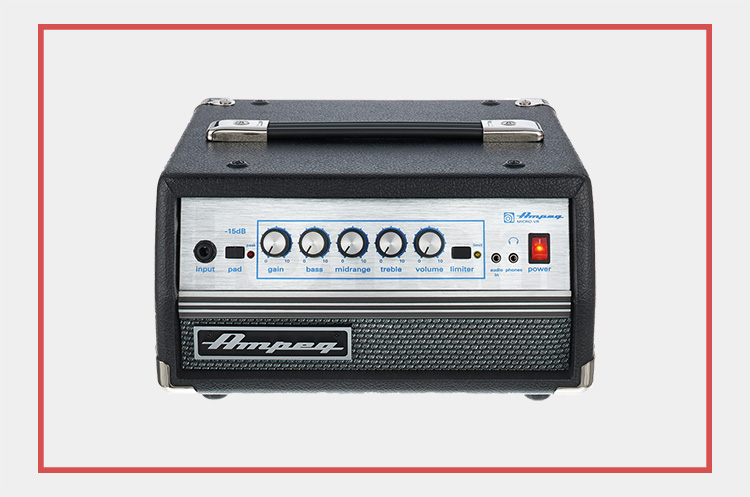
This small Ampeg bass amp is a kind of "mini version" of the classic SVT - but it was designed for smaller studios and stages where the SVT would simply be too loud. However, this amp is equipped with transistors in the preamp and power amp, no tubes.
In addition to standard controls for gain, 3-band EQ and volume, this bass amp has a built-in limiter. An interesting feature is the Audio In, which is intended for monitoring in the studio. The signal coming in there is mixed with the main bass signal and output through the headphone output.
Bass sounds the way it should through this amp: The sound is clean and present, ideal for all styles of music that do not require a lot of distortion. And if you do need distortion, you can easily add it with a distortion pedal.
The Ampeg SVT Micro is a very good bass amp for beginners, as it only costs 369€ - and for that the sound is incredibly good.
Price: 369€, Link
The best hybrid bass amplifiers
Hybrid bass amps try to combine the best of both worlds: they are light and relatively small, like transistor bass amps, but because of the tubes in the preamp they have a nicer and richer sound that is quite capable of distortion.
Hybrid amps usually have tubes in the preamp and either transistors in the power amp or a digital power amp. This makes them much lighter than tube amps.
Hartke LH-500

The Hartke LH-500 is one of the best bass amps for me - that's why I bought it 4 years ago and never regretted the decision. It is relatively simple, but has a very clean, impulsive sound.
I will say in advance that this bass amp is not capable of distortion at all - it can only sound clean, but incredibly good and loud. With the EQ, the sound can also be coloured very well, especially the low-band EQ brings a lot of "boom" into the sound.
It has a tube preamp with 12AX7 tubes, but they reproduce the sound very cleanly and precisely. Even when turned up to the max, the sound remains clean and undistorted.
The Hartke LH 500 has a practical DI-out on the front, which makes wiring in the studio much easier. It has a Brite mode and a limiter, but I hardly ever use them.

By loading the video, you accept YouTube's privacy policy.
Learn more
I can really recommend this bass amp to everyone - I've also played a few concerts and studio sessions with it and it has always kept up very well.
Price: 389€, Link
Markbass Little Mark Tube 800
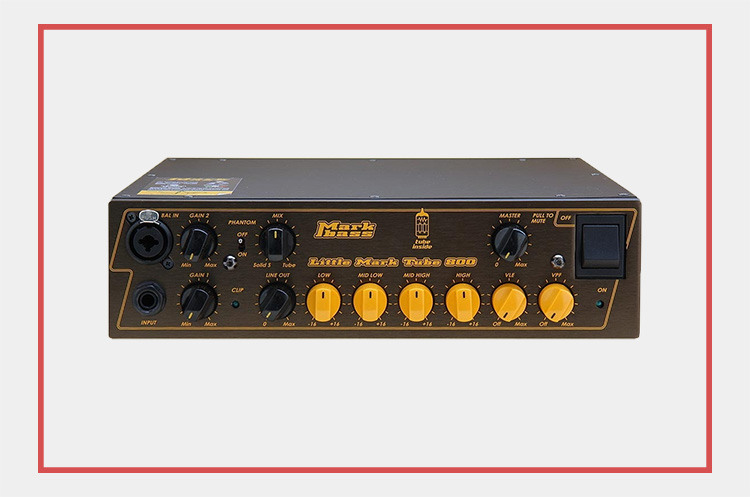
This bass amplifier is a little mini miracle. When I tried it for the first time, I was amazed by the powerful effect of the sound. Especially because it is so small!
The cool thing about the Markbass Little Mark Tube 800 is that it has two preamps - a tube preamp and a solid-state preamp that you can mix together. With the Gain 1, Gain 2 and Mix controls you can adjust the ratio between the two preamps very precisely.
With the 4-band EQ, the VLE (Vintage Loudspeaker Emulation) and the VPF (Vintage Preshape Filter) you have even more creative possibilities to shape the sound. VLE is a vintage speaker emulator that adds an extra vintage sound to the sound. The VPF cuts the mids at around 380Hz and is ideal for funk and R&B.
With 800W, this bass amp is very loud and therefore well suited for large stages. And with its ridiculous 2.9 kg (which are, of course, thanks to the digital power amplifier), it is the perfect travel partner!
I can definitely recommend this amp to anyone who can afford it - I myself plan to buy it at some point.
Price: 729€, Link
Markbass Little Mark Vintage
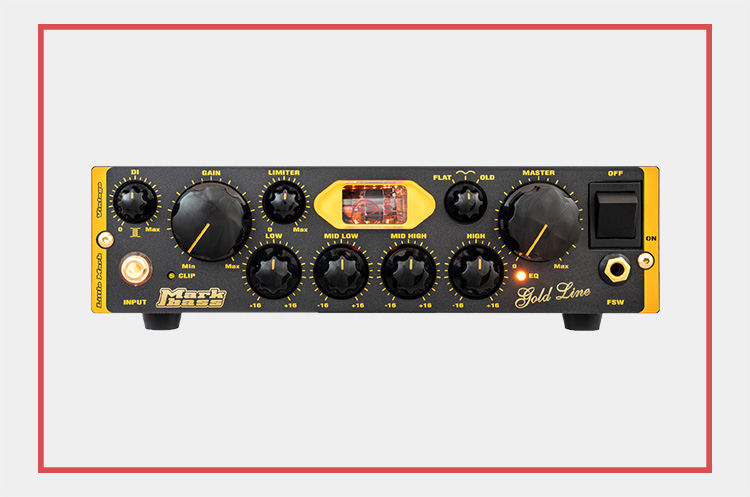
This other amp from Markbass is also among the best hybrid bass amps - it is very light and compact and offers a very good vintage sound with many shaping possibilities.
The unique thing about this bass amp is the way the limiter works: the built-in limiter prevents the sound from becoming too distorted. When you turn the limiter down, more of the distorted vintage sound comes through and the sound becomes really nice and saturated.
But if the control is all the way to the right, the sound stays nice and clean and undistorted. With the gain and master control, the relationship between distortion and overall volume can be adjusted very well.
The EQ is also very interesting: In addition to the normal 4-band controls, there is a control with which you can select 3 different EQ modes:
- In the left position (flat), the EQ functions normally as you would normally know it.
- In the middle, the mid frequencies are lowered a little, and the lows and highs are raised.
- In the right position (Old), the treble is lowered with a low-pass filter to create a vintage sound.
The adjustable and very high-quality DI output also makes this bass amp the perfect studio amp. All circuits in this amp are gold-plated.
Price: 798€, Link
The best digital bass amplifiers
Digital bass amplifiers are those that have a digital power amp built in and transistors in the preamp. This saves an enormous amount of weight and space. The sound is usually very clean and uncoloured.
These bass amplifiers have been around since the 70s, but they only became popular about 20 years ago. In the meantime, every manufacturer has models on the market and some manufacturers, like Markbass, rely completely on digital technology for all their power amps.
Ampeg PF-500 Portaflex
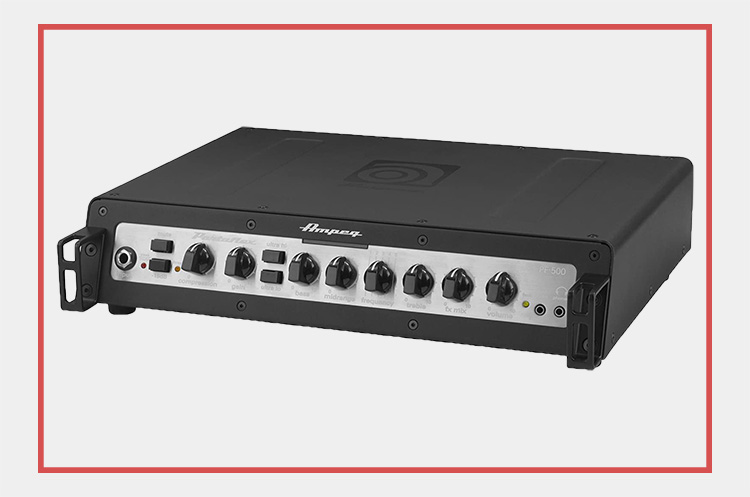
This is one of the few Ampeg amps without tubes, but the American company also wanted to be represented in this segment. And it must be said that they have succeeded very well!
This bass amp has - as usual from Ampeg - a 3-band EQ with selectable mids and an Ultra High and Ultra Low switch to shape the sound brighter or darker. There is also a practical compressor.
This is also not an amp for distortion - at least I don't like the distortion of the amp - but Ampeg has enough other models to choose from for that. This bass amp is clean and sounds modern, but full of character. It is also loud enough for most applications with its 500W.
It's incredibly well built and very robust, it seems almost indestructible. You don't have to worry when you're travelling or on stage. And at only 5 kg, it's pretty light, especially for an Ampeg.
Price: 499€, Link
Markbass Little Mark IV
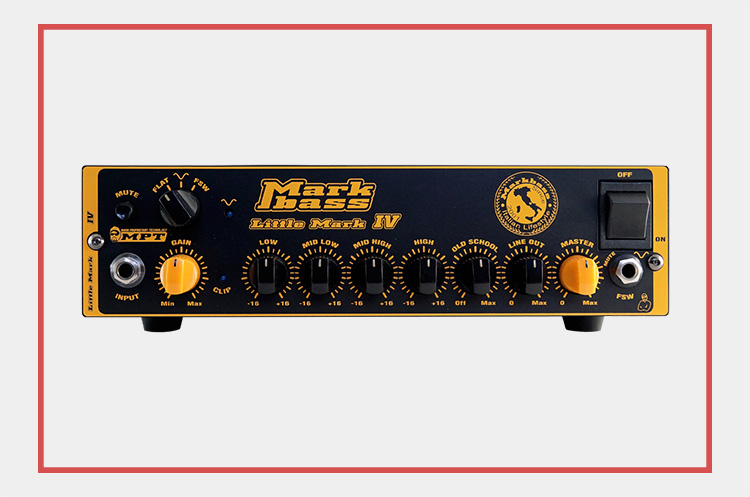
The Markbass Little Mark IV is a 500W amplifier that weighs only 2.8 kg - one of the lightest ever. But it has a lot of power and can move a whole lot of air.
In addition to the aforementioned Markbass 4-band EQ, this bass amp has an "old school" control that uses a low-pass filter to bring a vintage sound to the signal.
As with the Little Mark Vintage, you can change the EQ setting with another knob. Instead of Old School, however, the rightmost option allows you to control the two modes with a foot switch.
The sound is clean and very present, and the old-school control is really handy! It makes the bass sound a little darker and more indistinct.
There is a smaller and cheaper version, the Markbass Little Mark 250 Black Line. It only has 250W, but it has a few other cool features, like the VPF and VLE controls, and costs only €349.
Price: 559€, Link
Aguilar Tone Hammer 500
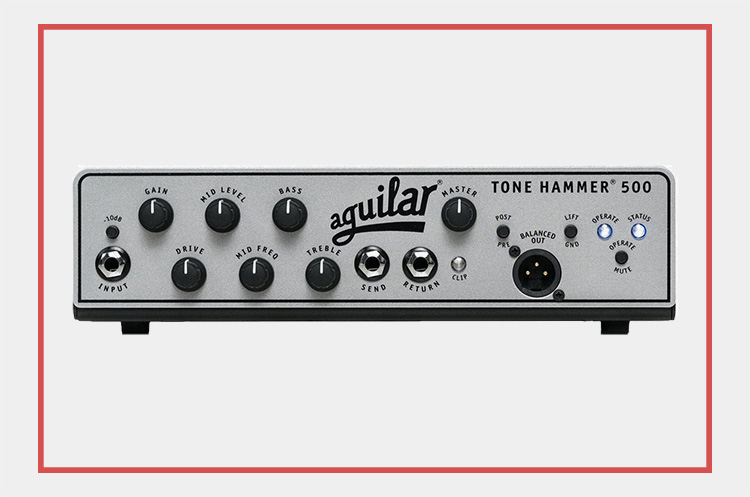
Aguilar is a manufacturer from New York that has been bringing high-quality bass equipment to the market since the 90s - and this bass amp is no different.
The Aguilar Tone Hammer has a very nice and characterful clean basic sound - but it also sounds amazingly good distorted (it has no tubes). And it can also distort really strongly and sound dirty!
The front panel layout is quite simple: a 3-band EQ with semi-parametric mids, a gain, a drive and a master control. That's all you need!
With a weight of only 2 kg, this is the lightest bass amplifier in this comparison. 2 kg is really little for a bass amplifier, one can only say: Hats off!
Price: 1.099€, Link
The best bass combos for beginners
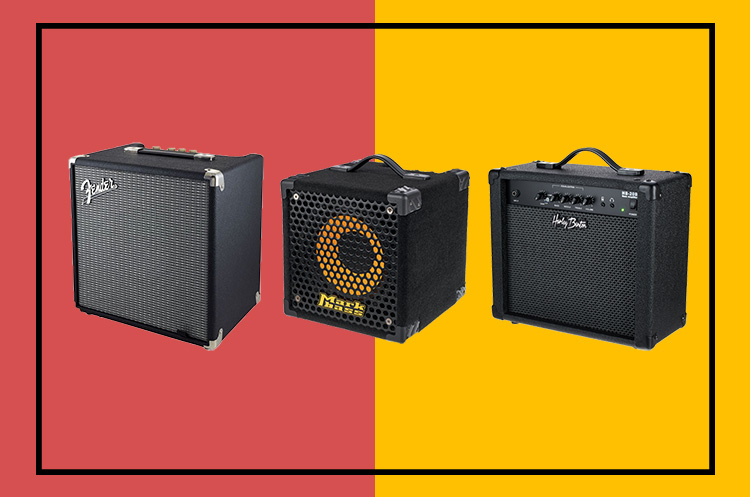
Bass combos are recommended for beginners because of the purchase price, as they usually cost under 400€. Bass combos are also good as home practice amps, since they are not very loud.
The Fender Rumble 25 is a 25W-8" bass combo that costs only $171, and sounds pretty good. If you have a little more money to spend, I definitely recommend the Markbass Micromark 801 (369€), because it really sounds great and has a little more power (60W).
And if you want to stay in the totally cheap range, you should try the Harley Benton HB-20B, which is only 79€. It only has 20W, but still with an 8" speaker.





